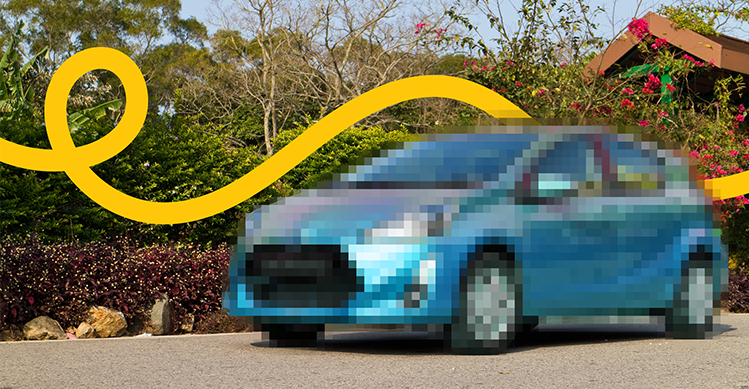Whether you’re selling because you're upgrading your car or simply want to free up some cash, the process will be a whole lot easier if you follow these helpful suggestions.
The steps below might cover off all the things you’ve already thought of, plus a bunch of things that might not have occurred to you.
It’s a lot easier to sell a vehicle that’s just been serviced, so book yours in to get all the necessaries done. You can often pick up a great deal at an online ‘Grab One’ type site or go to your trusted local service centre. Get them to update the service sticker on your windscreen and make sure you keep the service receipt. Speaking of receipts, see if you can find all the receipts for work done while you’ve owned the vehicle. Hopefully you have these stashed somewhere. They provide reassurance that your car has been looked after properly.
If your service centre does Warrant of Fitness checks, get that done at the same time. Otherwise, it’s off to the WOF centre for you. When selling a vehicle, the Warrant of Fitness (WoF) has to be less than 30 days old, unless both you and the buyer agree to give it a miss.
When a potential buyer sees your vehicle for the first time, either in an online listing or in the flesh, you want them to be impressed. Devoting half a day in the weekend to a valet could help your vehicle to attract more interest from potential buyers and pay you back with a better selling price. If you have more money than time, you could pay someone else to do the work. Totally up to you.
Don’t forget those hard-to-reach places, like the drink holder that’s full of sticky soft drink spills. If the upholstery’s looking grubby, buy a can of spray-on upholstery cleaner and see if you can remove the worst of it.
Tips for a cleaner machine:
Forget all the good times you’ve had in your vehicle that might make you want to inflate the asking price. Choosing a price is all about what’s happening in the market. Browse Trademe to find vehicles with the same model, year and kilometres on the clock and make a note of what they’re asking. If you want to sell your vehicle quickly, pick a price nearer the bottom of the range. If you’re in no particular hurry, go for mid-range. Only choose a price at the high end if your vehicle is the most perfect example of it’s make and model ever seen (you’ll need to write an ad that reflects this). It’s always best to say ‘or near offer’, because buyers usually expect to negotiate you down a little.
While there are several online platforms for selling vehicles, Trademe still rules supreme. If you park your vehicle on the street during the day, a ‘for sale’ sign in the window’s also a good idea.
It might be tempting to get cute with your vehicle listing, but really it’s best to stay with the time-proven headline of: Make, model, year and something about the condition, i.e. Toyota Corolla 2012 low kms or Ford Fiesta 2005 one lady owner.
When you’re writing the text of your ad, put yourself in the shoes of your potential buyer. What would you want to read? Start by listing all the facts about the car, making sure you repeat the info from the headline. Make, model, year, kms, colour, engine size, NZ-new or imported, tyre condition and general vehicle condition. If you have a tow bar, be sure to mention it.
Then you could add information that helps to sell the car to people who might not be familiar with the model. This is your chance to talk about features like cruise control, economy, handling and anything else you like about the vehicle. Don’t forget to include service history, if it’s a selling point. Be honest about scratches and dings, so that you don’t disappoint customers who come to view the vehicle.
Photos are really important. To make your vehicle look great, check out the angles used by car manufacturers on their brand websites – they know how to make a car look a million bucks. It’s also a good idea to photograph the dashboard in a way that displays the mileage. If the interior is in excellent condition, snap a couple of pics to include with your listing.
If your car’s make and model has an excellent reputation, find a great online review from an expert source and include a link to it.
Even if you list your vehicle with a ‘buy now’ price, you can expect potential buyers to request a viewing and test drive. After all, it’s what you would do if you were buying.
To avoid fraudsters, ask for a name and contact number then ring or text the number to ensure you’re dealing with a legitimate enquiry. If you’re not keen on having someone visit you at your home, arrange to meet them at a local landmark. Check your insurance to make sure the vehicle is covered for other drivers. Be sure to have useful documentation handy, like service and repair receipts.
When it comes to the test drive, if you’re worried about your car vanishing into the distance never to be seen again, ask to ride along in the back seat. Otherwise, keeping their car keys as security will provide you with reassurance that your test drivers won’t do a runner with your car.
If your potential buyer is keen and wants to get the vehicle inspected, be cooperative. Or be super-clever and speed this part of the buying process up by having the vehicle inspected before you put it on the market.
Expect your buyer to offer you less than you’re asking. It’s the Kiwi way. How you handle the situation is up to you. You can make a counter offer or you can stand firm. It really depends on how many enquiries you’ve had from other potential buyers.
If you’re being offered a reasonable deal and the buyer is the only person who’s shown any interest, it might be time to nod your head and do the handshake. However, if you’ve been overwhelmed by buyer attention, you could hang out for the asking price. It’s up to you.
Being paid for your vehicle is so much easier these days. In the not-too-distant past, it was all about bank cheques. Now you can ask for payment by internet banking and see the money go into your account. Cash is obviously OK too, but never accept a personal cheque.
It’s a good idea to prepare two sales agreements – one for you and one for the buyer. The agreement should describe the car and specify the agreed sale price. You need to sign the agreement as well as the buyer. A receipt can be part of the agreement. They’ll want to see you write ‘paid in full’ somewhere once the money’s safely in your account.
If the buyer isn’t going to pay for the vehicle on the spot, take a deposit of 10% (in cash or by internet banking) and put a full settlement date on the agreement.
Officially changing the ownership of the vehicle is really important, for insurance and because you don’t want to be the unwilling recipient of someone else’s speeding and parking tickets! Like payment, change of ownership is easily done online at the NZTA website. Do it at the time of payment and all will be well.
The analogue (hard copy) way to do this involves two forms: the seller completes the Certificate of Registration form (or an MR13A); the buyer completes form MR13B. If you go this way, the buyer should complete and submit MR13B at an NZTA agent and get a receipt to show you before you hand over the keys.
If you're buying a new car make sure you get it insured. You can sort your car insurance with AMI. There are three levels of cover to choose from:


